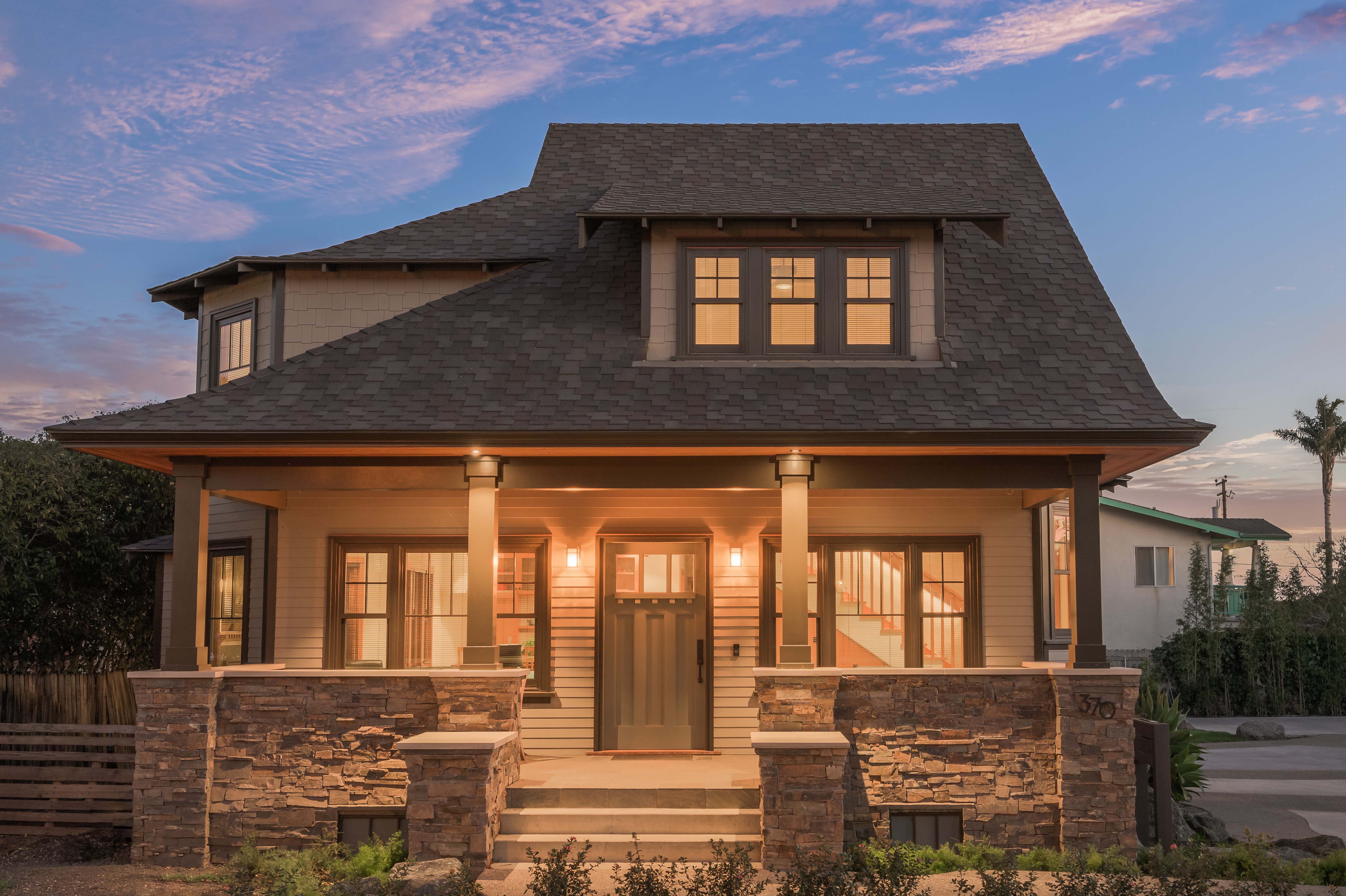
This is a very common question our team of tech support engineers frequently discuss with designers. The difference between a ridge board and a ridge beam comes down to whether the roof is designed as a compression style or structural style roof. Though there is also a third type of roof when using Weyerhaeuser engineered wood products which you can read more about below.
Steve Rudowsky, a territory manager with Trus Joist Weyerhaeuser put together a model to demonstrate the difference between the two types of roof framing that determine whether you need a ridge board, or a ridge beam.
Compression Roof
A conventionally framed roof system is one built in accordance with the provisions of the International Residential Code (IRC). This system is also known as a compression roof or ‘prescriptive roof’, as the construction details are prescribed in the code. It can be used for roofs with a slope of 3:12 to 12:12 and basically constructs a triangle, connecting two opposing rafters with a ceiling joist/tie at their low ends. A ridge board connects the upper ends of the rafters forming the apex of the triangle. Typically, a ceiling joist spanning from opposite exterior walls connects the lower ends of the rafters together, forming the base and completing the triangle. See example roof cross section shown below.
With the non-structural ridge board at the top, the two opposing rafters basically prop each other up. Under load, the rafters will experience both axial and bending stresses. The ceiling joist (tension tie) at the rafter low end resists the thrust generated as those ends tend to shift outward and push the supporting wall. The total system (ridge board, rafters, collar ties, and ceiling joist) is specified by the IRC. See chapter 8 of the 2018 IRC for more roof information.
Weyerhaeuser EWP is generally available in lengths up to 48′. They are often used by framers as substitutes for typical lumber products such as 2x8’s and 2x10’s in conventionally framed roofs. Framers may favor a single long piece of Microllam where they would have to use multiple pieces of dimension lumber, say in a long length ridge board application for example.
This substitution occasionally creates requests for sealed documentation/calculations because the product used is ‘engineered’ and not specified in the building code. These requests aren’t necessary or required. To qualify as a substitute for any of the system pieces, the Weyerhaeuser EWP needs to be equivalent to or better than the item it is replacing. Simply stated, this means the EWP product must be similar/larger size and similar/higher strength than the piece being replaced. See Weyerhaeuser Technical Resource Sheet 1502 for additional substitution information.
For example, a framer may choose to use a 40′ long piece of 1 ¾″ x 9 ¼ ″ Microllam for a ridge board instead of three or four pieces of dimension lumber 2x10’s. This would be acceptable since the Microllam is similarly sized. For this substitution, documentation/calculation isn’t needed.
Structural Roof
This roof type is analogous to floor construction, where the joists have structural support/bearings at each end. Structural roof slopes typically range from 0:12 to a maximum of 12:12.
Structural roofs typically have ridge beams at the upper ends instead of the ridge board described above for compression roofs. See example shown below. Hip and valley members in structural roofs are also assumed to be structural beams, meaning they have bearing at each end and support the reactions from the roof joists attached. Calculations can be generated for joists and beams within a structural roof system using Forte®WEB or Javelin® software.

Weyerhaeuser EWP Roof
This type of roof is a proprietary system using TimberStrand LSL rafters and ceiling joists along with either Microllam LVL or TimberStrand LSL hip, valley and ridge members. Roof geometry, required member sizes and connection details are specified in our Roof System Design Guide, TJ-9005. Similar to the compression roof built per the IRC, this system is also prescriptive. Here, the roof slope covered can range from 4:12 to 12:12 and have rafter spacing up to 24″ on center.
The information and details provided in the guide are based on testing performed by Weyerhaeuser to demonstrate equivalency to traditional framed systems. Any system constructed using this guide must be based entirely on the guide with no material/detail substitutions allowed. As with compression roofs, the system formed is triangular with a ridge board, two rafters and the ceiling tie at the bottom. Similar to compression roofs, member calculations cannot be supplied for the individual members since much of the information is based on system testing or products that meet or exceed prescriptive guidelines.
Contact your Weyerhaeuser representative about your next project


